With a low-key remark in the state-run People’s Daily, China effectively signaled its intention to establish a fourth fleet for the People’s Liberation Army Navy (PLAN). However, this may yet prove temporary.
The PLAN is currently structured around three fleets, each with a geographic focus: the North Sea Fleet, headquartered in Qingdao; the East Sea Fleet, headquartered in Ningbo; and the South Sea Fleet, headquartered in Zhanjiang. But an Aug. 16 newspaper article suggests that change is brewing on a grander scale than most envisage.
“China’s new aircraft carrier is planning to serve in the South China Sea by the next Army Day (Aug. 1),” the People’s Daily Online reported, referencing an unnamed military source. “The vessel will be under direct command of the country’s Central Military Commission (CMC).”
The South Sea Fleet is normally responsible for the South China Sea, including hot spots centred on the Paracel and Spratly Islands. By introducing the carrier into this mix but placing it under the CMC, the vessel is being recognized as a strategic asset on a par with the Second Artillery’s ballistic missile force.
In the mid-1990s, foreign intelligence sources spoke privately of China introducing its first aircraft carrier during the period 2005-2010, and they were nearly spot-on with the timing. Some offered further elaboration.
“The decision to proceed with the carrier program may be tied to reports of PLAN intentions to create a fourth fleet that would supplement the existing East Sea, North Sea and South Sea fleets,” I wrote in 1995, based on these discussions. “Such a scenario envisages the current elements remaining geographically based while the carrier battle group, or fourth fleet, is organized as an independent strike force directly under General Staff Headquarters command.”
In the event, the PLA’s operational structure has been bypassed to place command and control with the more senior CMC ― China’s supreme policy-making body for military affairs, headed by President Hu Jintao.
Yet analysts believe that the CMC is structurally unable to manage a combat- ready operational force.
“It would have to be helped by the PLAN headquarters or made an independent asset distinct from the three fleet commands, but I would think that it would not be made into a separate organizational force like the Second Artillery,” said Dr. Tai Ming Cheung of the University of California Institute on Global Conflict and Cooperation.
That prescient view from the mid-1990s is further significant for noting the truism that aircraft carriers do not operate individually. Rather, they are the core element of a potent flotilla known as a carrier battle group (CBG).
Beijing has underplayed this aspect, invariably referring to the carrier alone. But this is a valuable and vulnerable asset that requires protection, as every country with an operational carrier capability knows.
CBGs differ in their make-up, but several additional vessels are invariably required to support the carrier and its organic air wing. The American model typically includes two guided missile cruisers, two destroyers, one frigate, two nuclear-powered attack submarines and a supply ship. Depending on the mission, these may be supplemented by troop vessels, amphibious vessels and cargo vessels.
Other navies operate variants of this structure, but all include a number of core capabilities, increasingly fitted on multi-mission platforms. These involve air defence, anti-submarine warfare and land-attack cruise missiles. Submarines provide anti-surface and anti-submarine screening, and a replenishment ship allows for supplies to be topped up while under way.
In the PLAN context, this means including with the carrier one or two Type 093 Shang class nuclear-powered attack submarines along with one or two Sovremenny class destroyers.
There would be one or two other destroyers ― perhaps the Type 051C Louzhou class or Type 052C Luyang-II class, although the Luyang-II might also displace the Sovremenny ― along with at least one frigate. The latter could well be the multi-purpose Type 054A Jiangkai II class introduced in 2008. The initial requirement for a replenishment ship could involve the 23,000 ton Fuchi class, which entered service in 2005.
Together, these promise a potent force but one which will take years of training to fully refine.
Beijing has stated that its first carrier ― the ex-Varyag, which recently completed its initial sea trials after extensive refurbishment ― will be used for ‘research and training’ once formally transferred to the PLAN. But this training activity must certainly extend beyond the vessel itself to involve the full CBG.
A CBG is normally assembled as needed. It is nevertheless intriguing to consider what impact the regular absence of China’s most advanced warships could have on the fleets from which they are drawn. Or the impetus this requirement could provide for a host of new naval construction.
Also worth mulling is the possibility that China intends to induct several aircraft carriers beyond the basic vessel now evident. This suggests that a fourth fleet centred on the ex-Varyag could be an interim measure pending deeper changes.
Professor Nan Li of the China Maritime Studies Institute at the United States Naval War College argues that the PLAN is not satisfied with its current three fleets and their narrow geographic focus. “They are not appropriate for operating beyond coastal waters. There’s no question about that,” he said in a telephone interview.
It will take some years for the PLAN to induct its first carrier, assemble its air wing and form around it the CBG. Then train, train, train.
Chinese shipyards could, meanwhile, build new carriers with full operational capabilities while planners consider how best to restructure the PLAN in order to accommodate them and Beijing’s expanding maritime vision. Followed by new doctrine and considerably more training.
The intentions are clear. Only the scale and the timeframe remain hazy.
By Robert Karniol
Robert Karniol, a veteran military affairs journalist, was Asia-Pacific editor of Jane’s Defence Weekly from 1988-2007. He is now a columnist for the Straits Times of Singapore. ― Ed.
(The Straits Times)
(Asia News Network)
The PLAN is currently structured around three fleets, each with a geographic focus: the North Sea Fleet, headquartered in Qingdao; the East Sea Fleet, headquartered in Ningbo; and the South Sea Fleet, headquartered in Zhanjiang. But an Aug. 16 newspaper article suggests that change is brewing on a grander scale than most envisage.
“China’s new aircraft carrier is planning to serve in the South China Sea by the next Army Day (Aug. 1),” the People’s Daily Online reported, referencing an unnamed military source. “The vessel will be under direct command of the country’s Central Military Commission (CMC).”
The South Sea Fleet is normally responsible for the South China Sea, including hot spots centred on the Paracel and Spratly Islands. By introducing the carrier into this mix but placing it under the CMC, the vessel is being recognized as a strategic asset on a par with the Second Artillery’s ballistic missile force.
In the mid-1990s, foreign intelligence sources spoke privately of China introducing its first aircraft carrier during the period 2005-2010, and they were nearly spot-on with the timing. Some offered further elaboration.
“The decision to proceed with the carrier program may be tied to reports of PLAN intentions to create a fourth fleet that would supplement the existing East Sea, North Sea and South Sea fleets,” I wrote in 1995, based on these discussions. “Such a scenario envisages the current elements remaining geographically based while the carrier battle group, or fourth fleet, is organized as an independent strike force directly under General Staff Headquarters command.”
In the event, the PLA’s operational structure has been bypassed to place command and control with the more senior CMC ― China’s supreme policy-making body for military affairs, headed by President Hu Jintao.
Yet analysts believe that the CMC is structurally unable to manage a combat- ready operational force.
“It would have to be helped by the PLAN headquarters or made an independent asset distinct from the three fleet commands, but I would think that it would not be made into a separate organizational force like the Second Artillery,” said Dr. Tai Ming Cheung of the University of California Institute on Global Conflict and Cooperation.
That prescient view from the mid-1990s is further significant for noting the truism that aircraft carriers do not operate individually. Rather, they are the core element of a potent flotilla known as a carrier battle group (CBG).
Beijing has underplayed this aspect, invariably referring to the carrier alone. But this is a valuable and vulnerable asset that requires protection, as every country with an operational carrier capability knows.
CBGs differ in their make-up, but several additional vessels are invariably required to support the carrier and its organic air wing. The American model typically includes two guided missile cruisers, two destroyers, one frigate, two nuclear-powered attack submarines and a supply ship. Depending on the mission, these may be supplemented by troop vessels, amphibious vessels and cargo vessels.
Other navies operate variants of this structure, but all include a number of core capabilities, increasingly fitted on multi-mission platforms. These involve air defence, anti-submarine warfare and land-attack cruise missiles. Submarines provide anti-surface and anti-submarine screening, and a replenishment ship allows for supplies to be topped up while under way.
In the PLAN context, this means including with the carrier one or two Type 093 Shang class nuclear-powered attack submarines along with one or two Sovremenny class destroyers.
There would be one or two other destroyers ― perhaps the Type 051C Louzhou class or Type 052C Luyang-II class, although the Luyang-II might also displace the Sovremenny ― along with at least one frigate. The latter could well be the multi-purpose Type 054A Jiangkai II class introduced in 2008. The initial requirement for a replenishment ship could involve the 23,000 ton Fuchi class, which entered service in 2005.
Together, these promise a potent force but one which will take years of training to fully refine.
Beijing has stated that its first carrier ― the ex-Varyag, which recently completed its initial sea trials after extensive refurbishment ― will be used for ‘research and training’ once formally transferred to the PLAN. But this training activity must certainly extend beyond the vessel itself to involve the full CBG.
A CBG is normally assembled as needed. It is nevertheless intriguing to consider what impact the regular absence of China’s most advanced warships could have on the fleets from which they are drawn. Or the impetus this requirement could provide for a host of new naval construction.
Also worth mulling is the possibility that China intends to induct several aircraft carriers beyond the basic vessel now evident. This suggests that a fourth fleet centred on the ex-Varyag could be an interim measure pending deeper changes.
Professor Nan Li of the China Maritime Studies Institute at the United States Naval War College argues that the PLAN is not satisfied with its current three fleets and their narrow geographic focus. “They are not appropriate for operating beyond coastal waters. There’s no question about that,” he said in a telephone interview.
It will take some years for the PLAN to induct its first carrier, assemble its air wing and form around it the CBG. Then train, train, train.
Chinese shipyards could, meanwhile, build new carriers with full operational capabilities while planners consider how best to restructure the PLAN in order to accommodate them and Beijing’s expanding maritime vision. Followed by new doctrine and considerably more training.
The intentions are clear. Only the scale and the timeframe remain hazy.
By Robert Karniol
Robert Karniol, a veteran military affairs journalist, was Asia-Pacific editor of Jane’s Defence Weekly from 1988-2007. He is now a columnist for the Straits Times of Singapore. ― Ed.
(The Straits Times)
(Asia News Network)


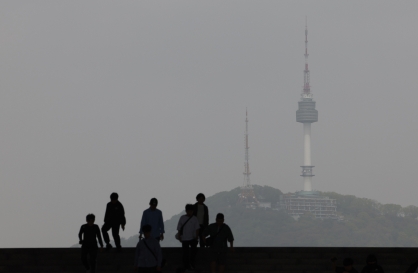
![[AtoZ Korean Mind] Does your job define who you are? Should it?](http://res.heraldm.com/phpwas/restmb_idxmake.php?idx=644&simg=/content/image/2024/05/06/20240506050099_0.jpg&u=)







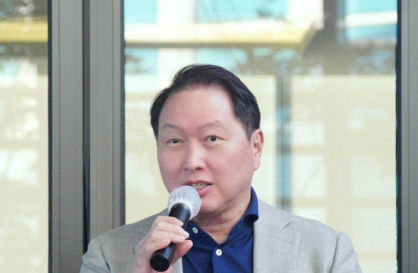

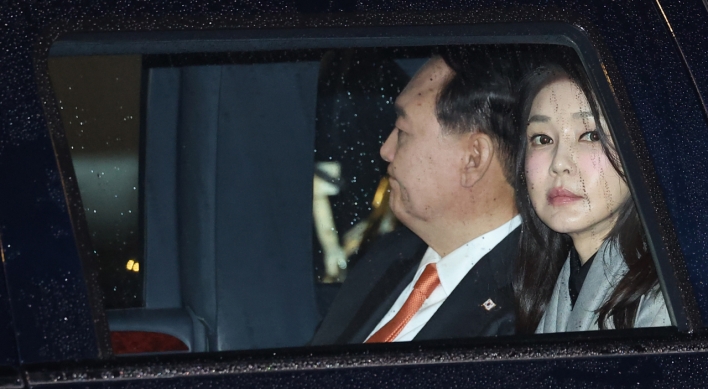

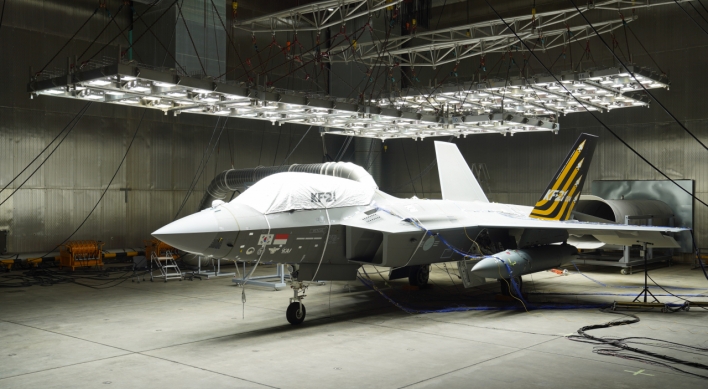
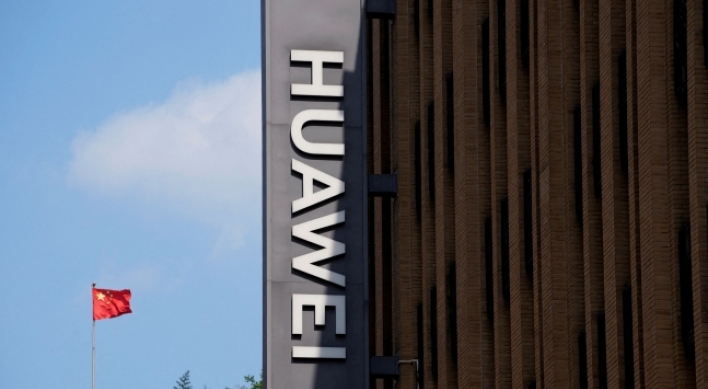

![[K-pop's dilemma] Is Hybe-Ador conflict a case of growing pains?](http://res.heraldm.com/phpwas/restmb_idxmake.php?idx=642&simg=/content/image/2024/05/07/20240507050746_0.jpg&u=)